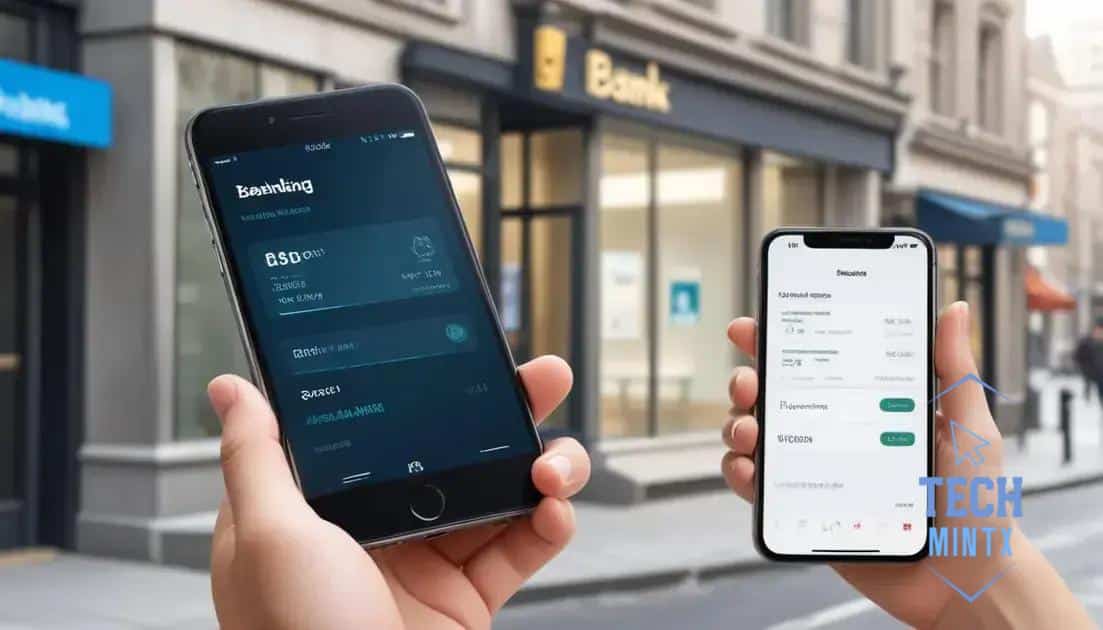Digital banks challenge traditional finance models

Digital banks challenge traditional finance models by offering enhanced convenience, lower fees, and personalized user experiences while also facing regulatory compliance and security challenges.
Digital banks challenge traditional finance models by reshaping customer experiences and enhancing convenience. Curious about how these banks are changing our financial landscape? Let’s dive in.
The rise of digital banks
The rise of digital banks has transformed the financial landscape swiftly. With the advancement of technology, these banks have emerged as flexible, efficient alternatives to traditional banking models. In this section, we explore what contributed to their popularity.
Key Factors Driving Growth
Several factors have fueled the success of digital banks:
- The demand for convenient banking solutions.
- Lower operational costs than traditional banks.
- The availability of mobile technology.
- Growing user familiarity with online services.
Digital banks often provide a better user experience. Many customers enjoy the sleek interface and user-friendly processes these banks offer. This easy accessibility helps attract a younger generation who prefers banking from their smartphones. Due to advancements in encryption and cybersecurity, consumers now feel safer conducting transactions online.
Adaptation and Innovation
To remain competitive, digital banks continuously adapt and innovate. They offer features like automated savings plans and instant loan approvals. Customer-centered services allow these banks to tailor their offerings to meet individual needs, establishing strong customer loyalty.
Overall, the growth of digital banks shows no signs of slowing down. As more customers recognize the advantages of digital banking, the industry must continually evolve to meet their expectations.
Comparing digital banks and traditional banks

When it comes to financial services, comparing digital banks and traditional banks reveals significant differences in how they operate. Understanding these differences can help consumers choose the banking option that best fits their needs.
Cost Structure
One major distinction is in their cost structures. Digital banks tend to have lower fees than traditional banks. This is because they have fewer physical branches and lower operational costs. Customers often find minimal or no monthly fees with digital banks.
- Digital banks can offer higher interest rates on savings.
- Traditional banks may charge fees for minimum balances.
- ATM withdrawal fees differ between the two.
Access to banking services is another area where these two types of banks diverge. Digital banks provide 24/7 access through mobile apps and websites, allowing customers to manage their finances anytime. Traditional banks, while also offering online banking, still depend on physical locations for many services. This means customers may need to visit a bank branch for complex transactions.
Customer Experience
Speaking of customer experience, the two types of banks also vary significantly in service delivery. Digital banks often have streamlined customer support via chat, email, and other online channels. In contrast, traditional banks may require in-person visits or longer wait times for phone support. This difference can be crucial for customers who seek prompt assistance.
Additionally, digital banks frequently leverage technology to offer features such as budgeting tools and spending notifications. Traditional banks may offer these services but often lag in technological advancements. The competitive nature of digital banks pushes them to prioritize user-friendly experiences.
Benefits of digital banking
The benefits of digital banking are numerous and increasingly appealing to consumers. As technology evolves, more people are turning to digital banks for their financial needs. This trend is shifting the way we think about managing money.
Convenience and Accessibility
One of the biggest advantages is the convenience these banks offer. Customers can access their accounts at any time, anywhere, thanks to mobile apps and online platforms. This 24/7 access allows for quick transactions and instant transfers.
- Users can check balances instantly.
- Paying bills is straightforward and easy.
- Customers can make deposits remotely with their smartphones.
Additionally, digital banks often boast user-friendly interfaces that make it easy to navigate and manage finances. Many offer budgeting tools that help customers track their spending, making it simple to stay on top of their finances.
Lower Fees and Better Rates
Another significant benefit is the reduced fees associated with digital banking. With lower operational costs, these banks can pass savings onto their customers. This means fewer monthly fees and better interest rates, especially for savings accounts.
Many digital banks provide no-fee structures, making banking more affordable for everyone. Higher interest rates on savings accounts can lead to better returns as well. For those who are conscious of their spending, this can be a major selling point.
In a rapidly changing financial landscape, the rise of digital banking provides a modern solution for consumers seeking better financial management. With its accessibility, lower costs, and innovative features, digital banking is shaping the future of finance.
Challenges faced by digital banks

While digital banks offer many advantages, they also face unique challenges in the financial landscape. Understanding these challenges is important for both consumers and the banks themselves.
Regulatory Compliance
One significant challenge is regulatory compliance. Digital banks must adhere to strict financial regulations, which can vary by region. This often requires them to invest in robust compliance systems to avoid penalties and ensure safe operations.
- Meeting capital requirements can be difficult.
- Adapting to changing regulations takes time and resources.
- Compliance burdens can slow down innovation.
Also, managing data security and privacy is critical. Digital banks are prime targets for cyberattacks, making it essential to keep customer information safe. Ensuring that customer data is protected requires constant investment in updated security measures.
Customer Trust and Awareness
Another challenge is gaining customer trust. Many consumers are still cautious about fully embracing digital banking. They may feel more comfortable with traditional banks since they often have a long-standing reputation. Digital banks need to build credibility through transparent practices and superior customer service.
In addition, raising awareness about their offerings can be tough. Many potential customers may not know the benefits of using a digital bank. This requires skillful marketing and educational efforts to show the advantages while dispelling any misconceptions.
Moreover, as competition increases, digital banks must constantly differentiate themselves. They face pressure to innovate while keeping costs low. Innovation may involve new features, user experience improvements, or unique financial products that stand out in a crowded market.
The future of banking in a digital age
The future of banking in a digital age is shaping up to be exciting and transformative. As technology advances, banks continue to innovate and adapt to meet customer needs. Many experts believe that digital banking will increasingly dominate the financial landscape.
Emergence of New Technologies
One significant aspect of this future is the emergence of new technologies. For example, artificial intelligence (AI) and machine learning are expected to play a major role. These technologies can enhance customer service through chatbots and personalized recommendations, making banking more efficient.
- Automation will streamline processes.
- AI can analyze data to predict customer needs.
- Machine learning helps prevent fraud by identifying unusual patterns.
Another trend is the rise of blockchain technology. This decentralized system enhances security and transparency, making transactions faster and safer. Banks adopting blockchain can offer customers improved services and lower costs.
Shifting Consumer Preferences
Shifting consumer preferences are also influencing the future of banking. More customers want seamless, user-friendly experiences. As a response, banks are focusing on improving their digital interfaces. Intuitive apps and web platforms will become standard, catering to the tech-savvy consumer.
Moreover, increased emphasis on sustainability and ethical banking practices is expected. Customers are becoming more conscious of their choices and prefer banks that align with their values. This means offering socially responsible investment options and green banking practices.
As digital banking evolves, partnerships with fintech companies may also grow. These collaborations will help traditional banks innovate and stay competitive, ensuring a balanced ecosystem that benefits customers.
FAQ – Frequently Asked Questions about Digital Banking
What are the main advantages of digital banks?
Digital banks offer convenience, lower fees, and improved user experiences compared to traditional banks.
How do digital banks ensure security for my data?
Digital banks invest in advanced cybersecurity measures to protect customer data from cyber threats.
Can I access my digital bank account anytime?
Yes, digital banks provide 24/7 access to your account through mobile apps and online platforms.
What challenges do digital banks face?
Digital banks face challenges such as regulatory compliance, building customer trust, and keeping up with technological advancements.





